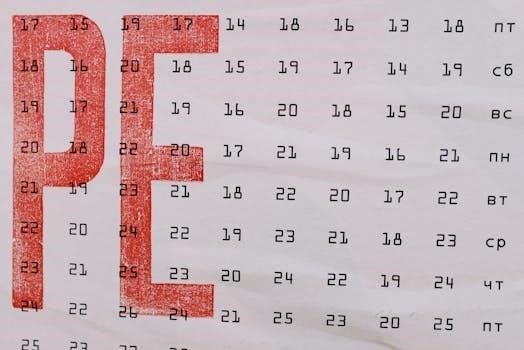The five-paragraph essay is a fundamental structure for students. It is an effective method for organizing ideas. This format is especially useful for shorter writing assignments. It helps present, explain, or examine material clearly.
What is a 5-Paragraph Essay?
A 5-paragraph essay is a writing format that organizes thoughts into a specific structure. This structure consists of an introductory paragraph, three body paragraphs, and a concluding paragraph. It’s a common method used in middle school and beyond to present information in a clear and logical way. The essay typically begins with an introductory paragraph that sets the stage for the discussion. The introduction includes a hook to capture the reader’s attention and a thesis statement that outlines the main points. Following the introduction are three body paragraphs. Each body paragraph focuses on one main idea, providing supporting evidence, examples, or explanations. The final paragraph is the conclusion, which summarizes the main points and reiterates the thesis. This structure helps to present arguments in an organized, easy-to-follow manner, making it a staple in academic writing.

The Structure of a 5-Paragraph Essay
The essay structure includes an introduction, three body paragraphs, and a conclusion. Each paragraph serves a distinct purpose. This structure helps to present ideas clearly and logically.
The introductory paragraph is the first impression of your essay. It serves three main purposes. First, it should include a hook to grab the reader’s attention; This could be a question, an interesting fact, or a brief anecdote. The hook aims to draw the reader into the topic and make them want to learn more. Second, it should introduce the general topic of the essay. This provides context for the reader. Finally, the introduction must contain a clear thesis statement. This statement is the central argument or claim of the essay. The thesis statement often lists the three main points to be discussed. The introduction sets the stage for the entire essay. It guides the reader through the arguments that will follow.
Body Paragraph 1⁚ First Main Point
The first body paragraph is where you begin to develop your main argument. It should start with a clear topic sentence. This sentence introduces the first point from your thesis statement. The topic sentence acts as a mini-thesis for the paragraph. Following the topic sentence, provide supporting evidence. This may include examples, facts, or details. Expand on your main idea by explaining the supporting evidence. Always ensure each sentence in the paragraph relates to the topic sentence and further develops it. A well-developed paragraph should have multiple sentences that work together. Aim for a length of around 150-, ensuring all sentences support the main point and link back to the thesis statement. The objective is to present a comprehensive argument.
Body Paragraph 2⁚ Second Main Point
The second body paragraph transitions smoothly from the first. Start with a topic sentence that introduces your second main point, which directly relates back to your thesis statement. This paragraph should delve into a new aspect of your argument. Develop the point by offering specific evidence or examples. This evidence should support your topic sentence and your overall thesis. Explain how the evidence proves the point. Aim for a well-developed paragraph, with several sentences that clarify the ideas. Remember each sentence should contribute to the main focus of this paragraph. Ensure the paragraph maintains a consistent length with others. A well-structured paragraph should have a clear topic sentence, supporting evidence and an explanation, all contributing to the essay’s objective.
Body Paragraph 3⁚ Third Main Point
The third body paragraph presents your final supporting argument. Begin with a transitional sentence that links back to the previous points. This sentence should also introduce the third main point. Present this main idea clearly and concisely. Provide supporting information and evidence. Elaborate on this evidence, showing how it strengthens your argument. Ensure all sentences within the paragraph contribute to the explanation of this main point. Maintain the same level of detail and analysis as in the previous body paragraphs. This ensures consistency throughout the essay. Remember, a successful paragraph will not only present evidence but also explain its significance to the main idea. This consistent approach aids in the strength of your essay’s overall argument.
Paragraph⁚ Summarizing the Essay
The conclusion paragraph serves to bring your essay to a satisfying close. It should begin by restating the thesis statement, but in different words. This rephrasing reinforces the central idea of your essay. Next, briefly summarize the main points discussed in each body paragraph. You do not need to reiterate every detail but rather the essence of each argument. Synthesize how these points support the overall thesis. It’s important to maintain a tone of finality and not introduce new ideas. End with a concluding sentence that offers a final thought. This could be a reflection on the topic, a call to action, or a final observation. This last sentence should leave the reader with a lasting impression and a sense of completion.

Using a Graphic Organizer
A graphic organizer is a tool to assist in constructing an essay draft. It helps to outline thoughts and support them with well-developed arguments and evidence.
Benefits of Using a Graphic Organizer
Employing a graphic organizer offers numerous advantages when crafting a five-paragraph essay. Firstly, it provides a structured framework for organizing thoughts, ensuring a logical flow of ideas. This visual representation aids in identifying the main points and supporting evidence, making the writing process more efficient. A graphic organizer also helps in clarifying the relationship between different ideas, leading to a more coherent and persuasive essay. Furthermore, it assists in mapping out the entire essay before writing, reducing the chances of writer’s block and ensuring that all key elements are included. By using a graphic organizer, you can readily see the overall structure of your essay, leading to better organization and improved quality. It also allows for easy revision and editing of the essay’s content and structure.
Common Graphic Organizer Elements
Several key elements are commonly found in graphic organizers designed for five-paragraph essays. These often include spaces for the introduction, where the hook and thesis statement are outlined. There are also designated areas for each of the three body paragraphs, with prompts for topic sentences and supporting evidence. Each body paragraph section may be further divided into parts to ensure logical flow of argument. Additionally, the conclusion paragraph is usually included, with a reminder to restate the thesis and summarize the main points. The structure ensures that each part of the essay is carefully planned and that all the important components are included. These visual cues make the process clearer, and help in making sure that there is a well-organized essay.

Types of 5-Paragraph Essay Graphic Organizers
There are several types of graphic organizers for five-paragraph essays. These include outline templates and visual organizers. Each type helps structure the essay effectively.
Outline Templates for 5-Paragraph Essays
Outline templates provide a structured approach to planning a five-paragraph essay. These templates typically include sections for the introduction, three body paragraphs, and a conclusion. They often feature prompts for key elements, such as the hook, thesis statement, topic sentences, and supporting evidence. Some templates may also include space for transitional phrases to ensure smooth flow between paragraphs. A common outline format is a list of roman numerals (I, II, III, IV, V) where I represents the introduction and V the conclusion. Within each of these sections, the template provides reminders for including components like main points, examples, and explanations. Using these templates helps ensure that all the critical parts of an essay are planned before drafting. The outline templates help to ensure a logical and organized presentation of ideas. They can be a starting point in the writing process.
Visual Graphic Organizers for 5-Paragraph Essays
Visual graphic organizers offer a different approach to planning a five-paragraph essay, using shapes and diagrams to represent each section. These organizers can take the form of a variety of shapes, such as a five-sectioned circle, a pyramid, or a series of connected boxes. Each shape represents a paragraph within the essay. The introduction might be a circle at the top, followed by three boxes for the body paragraphs, and a final box or a triangle at the bottom for the conclusion. Inside each shape, there are prompts for filling in the necessary details like the main idea and supporting evidence. The visual nature of these organizers helps students see the overall structure of the essay at a glance. This can aid in understanding the flow and connection between each paragraph. They can be particularly helpful for visual learners by creating a map that they can refer to. These visual aids help with the initial outlining process.

Tips for Effective Use
To use a graphic organizer effectively, first understand its structure. Fill it out completely with key points. Use it as a guide, not a rigid template.
How to Use the Graphic Organizer Efficiently
To maximize the benefits of a graphic organizer, begin by clearly defining your essay’s central question. This helps focus your ideas from the outset. Next, use the organizer to brainstorm and map out your introduction, including a hook and thesis statement. Ensure that your thesis includes the main points you will discuss in your body paragraphs. In each body paragraph section, outline the main topic, supporting points, and examples or evidence. This structured approach helps maintain paragraph unity. Make sure that each point supports your topic sentence. Use the graphic organizer to connect your ideas logically. Transition between paragraphs smoothly using the organizer. Finally, use it to summarize and restate your thesis in your conclusion, linking back to the main points.
